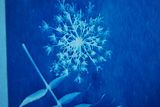Albumin would be commonly found in any food that contains egg whites. A very sensitive individual might react to trace amounts rather than just to entree’s that are egg based. Scrambled eggs and omelets are obvious sources but egg white is also in meringue. Marshmallows are based on egg white and coconut macaroons need egg white as the binder. So crispy rice treats could be an allergen due to the marshmallows and it turns out that grains of wheat themselves might be allergens due to the protein albumin as well as the gluten.
~ ~ ~ ~ ~ ~ ~ ~ ~ ~
Albumin Biological Activities: No activities reported for ALBUMIN
Plant species with highest amount
- [Triticum aestivum] L. — Wheat; 30,000 – 50,000 ppm in Seed;
- [Zingiber officinale] ROSCOE — Ginger; 4,984 – 45,924 ppm in Rhizome;
- [Aloe vera] (L.) BURM. f. — Aloe, Bitter Aloes; 1 – 5 ppm in Leaf;
- [Ricinus communis] L. — Castorbean; in Seed;
The Albumin information is from Dr. Duke’s Phytochemical and Ethnobotanical Databases
[ars-grin.gov/duke/http://www.greenpharmacy.com/ ] (but this no longer goes to the original link.)
~ ~ ~ ~ ~ ~ ~ ~ ~ ~ ~ ~ ~ ~ ~ ~
***Interesting list The presence of albumin in the wheat seed could help explain the increasing frequency of “gluten intolerance:” Actual cases of Celiac Sprue are rare. Celiac sprue is a genetic gluten intolerance characterized by a missing enzyme that is necessary for digesting gluten.
- A shared set of predisposing HLA-DQ genes account for the epidemiological overlap of celiac sprue and microscopic colitis. [ncbi.nlm.nih.gov/pubmed/10950045]
- A study in Eur J Gastroenterol Hepatol. 2012 Jan;24(1):59-63. links HLA-DQ types of celiac disease with Type I Diabetes-presence of both found in 11% of Libyan children in the study (n=218): [.ncbi.nlm.nih.gov]
- Persistently positive gliadin antibodies without transglutaminase antibodies in the elderly: gluten intolerance beyond coeliac disease. Dig Liver Dis. 2011 Oct;43(10):772-8. Epub 2011 Jun 8. [ncbi.nlm.nih.gov]
- Transglutaminase seems to be involved not only with gluten, albumin, but also with glutamine and calcium and also with the thyroid gland, healthy endothelial tissue and healthy bovine lens tissue (***gluacoma is a disease of the lens that is also commonly found in diabetes patients): [wikigenes.org/]
- Relationship between glaucoma and diabetes, hypertension. ScienceDaily (Aug. 17, 2011)[sciencedaily.com]
- BTW magnesium deficiency is common to diabetes, hypertension and glaucoma.
- Irresistible Quote about magnesium:
“Mg is very similar to a great opera singer: it is very demanding, but when everything is right, it can perform wonders. It is demanding in that its absorption requires a host of conditions and is inhibited by several factors. Moreover, Mg will leave the body, without hesitation, if any of a series of conditions are not met.” by S. Johnson, published in Medical Hypotheses
and more details: “Mg absorption requires plenty of Mg in the diet, Se (selenium), parathyroid hormone (PTH) and vitamins B6 and D. Furthermore, it is hindered by excess fat. On the other hand, Mg levels are decreased by excess ethanol, salt, phosphoric acid (sodas) and coffee intake, by profuse sweating, by intense, prolonged stress, by excessive menstruation and vaginal flux, by diuretics and other drugs and by certain parasites (pinworms).” by S. Johnson, published in Medical Hypotheses
“The multifaceted and widespread pathology of magnesium deficiency”, Medical Hypotheses (2001) 56(2), 163–170 © 2001 Harcourt Publishers Ltd doi: 10.1054/mehy.2000.1133, pdf [pinnaclife.com]



